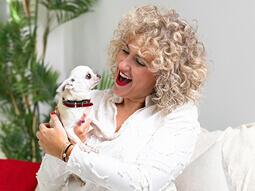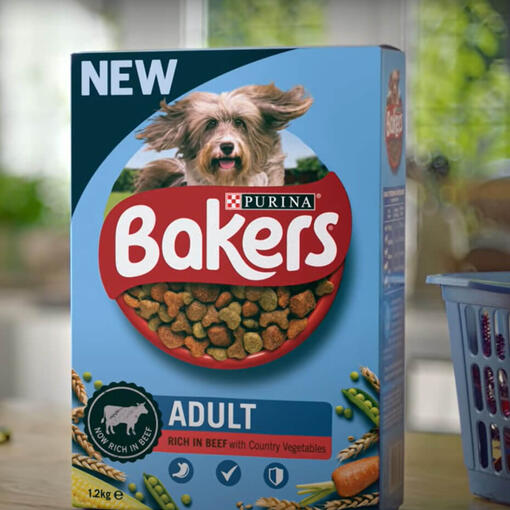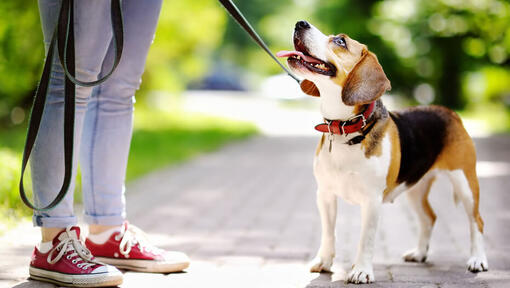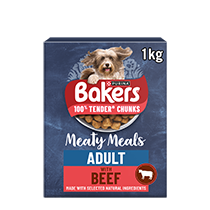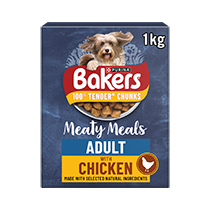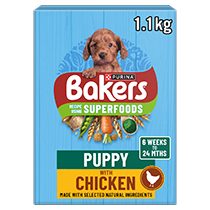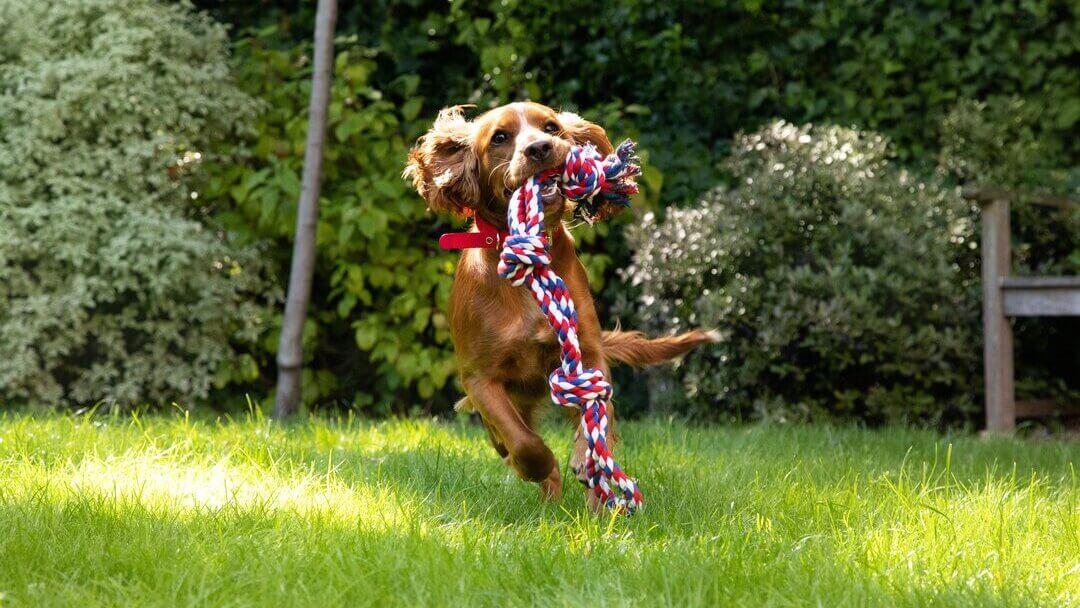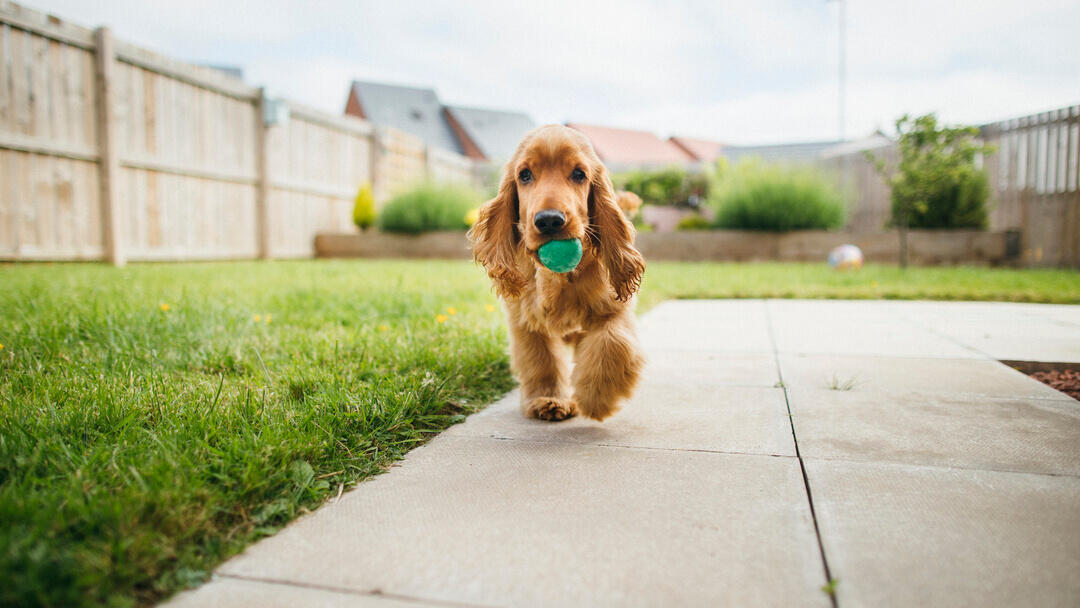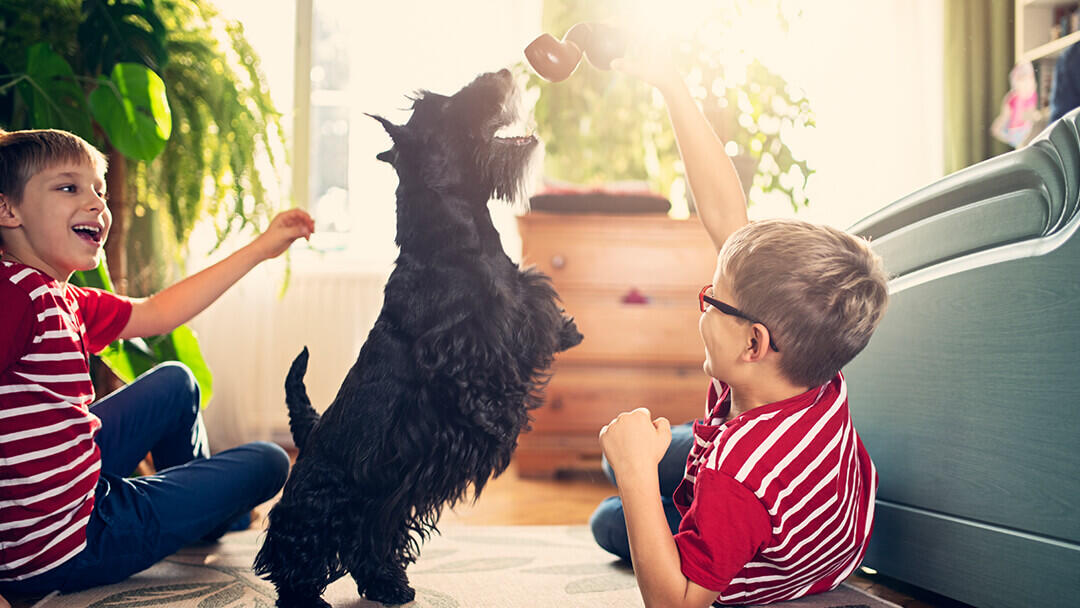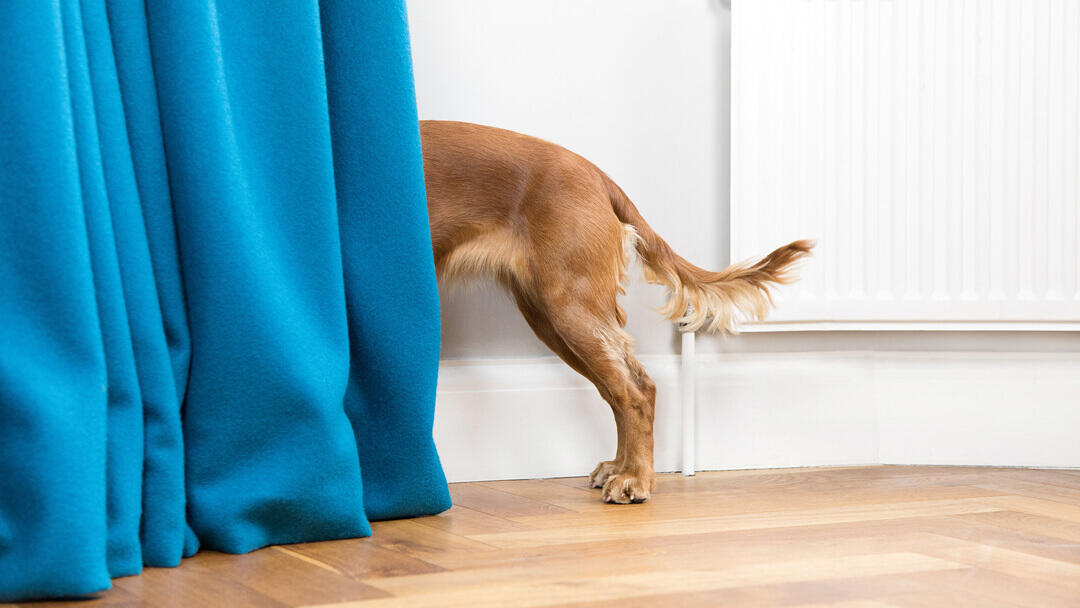10 Fun Brain Games for Dogs Perfect for Mental Stimulation


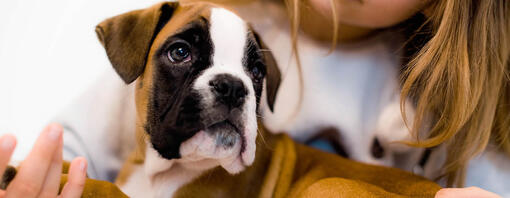
Classic games like ‘fetch’ are lots of fun for you and your dog, but exercise isn’t just about running around. Mental exercise is important too, as it can help fight boredom and teach your dog great new skills.
Dog brain games can help keep your pet on their toes when it’s too rainy to play outside, although your dog will enjoy these games at any moment. Additionally, they’re also great for dogs of any age – brain games for puppies challenge their developing brains and keep them learning new skills. They can also help keep adult dogs stimulated and may even help senior dogs stay alert and active.
We’ve put together ten of our favourite brain games for dogs.
1. Treasure hunt
This is a great brain game to test your dog’s thinking skills! Hide pieces of your dog’s favourite treat around the house (or if it’s nice outside, the garden) and let them hunt for a tasty reward. Your dog will have to use their nose to scent out the prize.
Every time you play this dog brain game, hide the treats in increasingly difficult places to keep things interesting. If your dog loves to follow scents (for example, if you have a scent hound) try leaving a ‘trail’ around the house or garden for them to follow. Just take a delicious-smelling treat, touch it on surfaces around the house in a continuous trail, and hide it at the end.
Dogs enjoy tracking scents; however, to prevent issues where they might spend the entire day searching for food around the house or garden, a good idea may be to introduce a start signal for the game (like "search") and another one to end it ("finish"). This way, your dog will know when it can search and when it can relax once the game is over.
2. Brain training toys
A really simple brain game for dogs involves hiding treats inside a special toy. There are many toys you can buy for this purpose – just put some of your dog’s favourite treat inside, and watch them try to release it.
This may involve rolling their toy a certain way, squeezing it, or using sheer determination. Whichever toy you choose, it will help spread their treats or food out over a longer period of time, as well as keeping them occupied.
3. Learn a trick or two
Teaching your dog a trick or two is a great way to spend quality time with them and get their brain working. Teach them to recognise objects, fetch your slippers or roll over on command.
As well as impressing people, these games will stretch your dog’s memory and attention! Discover five advanced dog training techniques you can teach your pet here.
4. Three cups
This game is great for encouraging your dog to pay attention to you. All you need is three cups and a treat, such as a piece of treat.
Before starting the dog brain game, make sure each of the cups smells like the treat; a good way to do this is to simply wipe the treat around the inside rim of each cup. Then, with your dog watching you, place the treat under one of the upturned cups, and place the other upturned cups next to it.
With your dog still watching, shuffle the cups around then let them use their paw or nose to try and turn over the right cup. If they choose the wrong one, show them the treat, but don’t let them have it – shuffle again, and let them keep trying until they can keep track of the correct cup!
5. Advanced brain game for dogs
This advanced dog brain game encourages independent thinking as your dog is rewarded for trying new ‘tricks’ that they have come up with themselves. This is a great way to encourage their inventiveness.
Give your dog something fairly unfamiliar to interact with (such as a chair), and say “trick” to them. When your dog interacts with it – for example, they might sniff it – give them a treat.
Give the “trick” command again. Whenever your dog does something new, such as pushing the chair, give them another treat.
Keep giving them the command, and reward them every time they come up with something new. If they replicate the same behaviour, such as pushing the chair a second time, simply ignore them and don’t offer them the reward.
After a while your dog will realise that trying new behaviours when you say “trick” will result in a treat. Soon they’ll come up with all sorts of inventive ways to earn their treat, such as jumping onto the chair or squeezing underneath it.
6. Find the toy
First step when playing this game is to choose a toy. It can be any of your dog’s favourites but make sure it’s one they can easily recognise and enjoy retrieving. When playing, it’s a good idea to choose easy hiding places like under a blanket or behind a cushion where it can still be a bit visible.
Start by encouraging your dog to search for it by showing the toy and letting them sniff it. Then, while keeping their attention, go to one of the hiding spots and place the toy there while encouraging them to find it by using cue words like “Search!” or “Find the toy!”.
Rewards and celebrations are very important when it comes to games. Shower your dog with praise, treats, and affection when they find the toy and you can even go for a quick tug-of-war game with the toy as a reward.
After a while, you can start increasing the difficulty of the game by hiding the toy in more challenging spots like behind doors, higher surfaces, or even outside if you have a back yard.
Remember that it can be a good idea to give your dog a signal when you want the game to end so that they can relax too ("finish" or "it's over").
7. Muffin tin game
For this game, you’ll need just a muffin tin and some of your dog’s favourite treats. They should be tiny pieces of treats, so that they fit the cups in the tin. Next, you’ll need to introduce your dog to the muffin tin, let them smell it and watch you while you add the treats in it. Once they are engaged and seem interested, cover the treats with some random objects like a tennis ball, a toy, or fabric squares. Remember to supervise closely and avoid anything that is likely to be eaten and cause a blockage.
The goal is for your dog to explore every cup in the tin and uncover the treat by lifting the object. You can also use a cue word to encourage them to play, something like “Find it!” or “Get the treat!”, then offer praise and positive reinforcement when they succeed. Your dog is sure to have a blast!
8. Name that object
Another great dog brain game that can keep a dog entertained for hours is a simple but highly rewarding one. You just have to select a few objects that your dog is familiar with and assign a unique name to each, like “ball”, or “toy”, or “plushie”. Your dog will have to learn to recognise the name and retrieve the specific object successfully.
Place one of the objects on the floor in front of you (for example, a ball). When your dog explores the ball with their nose or paw, give them a treat (without saying anything). After giving the treat, hide the ball behind your back, and when they have finished eating the treat, place it back on the floor. When your dog touches it again, give the treat again, and repeat the process several times.
Next, place the ball on the floor and say the word "ball." You will notice that the dog will go to touch it (in fact, it would have done so even if you hadn't said "ball"). This way, you will have taught them that the object is called "ball." Next, do the same with another different object. When you have two objects with names, for example, "ball" and "stuffed animal," place them together and see if they have learned them well. You can make the exercise more challenging each time by introducing new objects.
VARIANT: EVEN HARDER
When your dog already knows 10 different objects, try this: place the 10 objects in front of you (although it would be better to do it with the objects out of your view so that could influence their decisions). Take a new object (for example, a stuffed cow), one they have never seen before (remember, they already know 10 different objects), and place it with the other 10.
Now, the dog has 11 objects in front of him and one is unknown for him. At this moment, say "cow." It's likely that your dog will learn, by process of elimination, that the new object you placed is called "cow," and therefore, that's the one they pick. You will have taught them a new word (through "fast mapping"). This way, you can teach them dozens of new words very quickly.
9. Obstacle course
Although this game is best played outside, you can definitely adapt it for the inside as well. Just make sure you have some free space and use objects that are safe and stable like cones, low jumps, or hula hoops, depending on your dog’s size, age, and agility.
The key is to familiarise your dog with each obstacle one at the time. Give them time to inspect and sniff it while using positive reinforcement like treats or praise. After this is done, you can start the obstacle course by arranging the obstacles in a logical sequence, starting with the easier ones. Place them at a comfortable distance apart so that your dog can navigate through them smoothly.
Begin the game by using basic commands like “sit”, “stay”, “leave it”, or “come” to guide them through it. It’s important that they understand these commands so if they don’t already know them, you’ll have to teach them first. Always finish the game with a rewarding experience for the dog, like a treat or praise!
10. Hide and seek
Just like regular ‘Hide and Seek’, this is a game that provides lots of mental stimulation for your dog.
Once you’ve found your hiding place, give the command for your dog to start seeking you. Remember to choose appropriate hiding spots to make sure your dog stays safe while looking for you. When they find you, make sure to use treats, praise, and plenty of excitement to keep your dog engaged and entertained. The best thing about this game is that you can repeat it as many times as you want by changing the hiding spots, or even getting other family members involved.
Closing Points: There are three types of games for dogs:
1. Games for your dog to play with you: balls, tug ropes, frisbees, etc. With these toys, your dog will enjoy them a lot as long as you are playing with them. It's like a ball for kids, meaning a child can play alone with a ball for a while, but if they have to spend a lot of time with it, it's better to form two teams and play a soccer match.
2. Games for your dog to enjoy alone for an extended period (the equivalent in kids would be a video game console, with which a child can spend hours playing alone without needing someone else to play with). All food-dispensing toys are a good option.
3. Cognitive toys or those designed not only to keep your dog busy but also to help them learn things that can occupy their brains. Cognitive mats, interactive toys, etc. In this case, the owner's presence is also important because it is often necessary to assist in the learning process.
When you’ve mastered all these dog brain games, use your creativity to create new challenges for your dog. If you’ve come up with a great game, let us know all about it!
Next, check out our list of seven healthy dog treats, ideal for training and teaching them new tricks.

Related articles by Bakers


